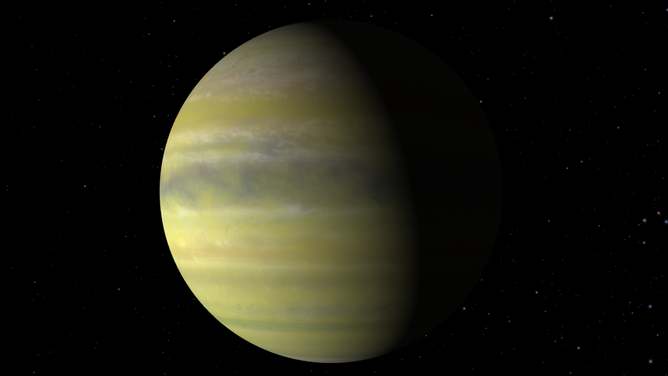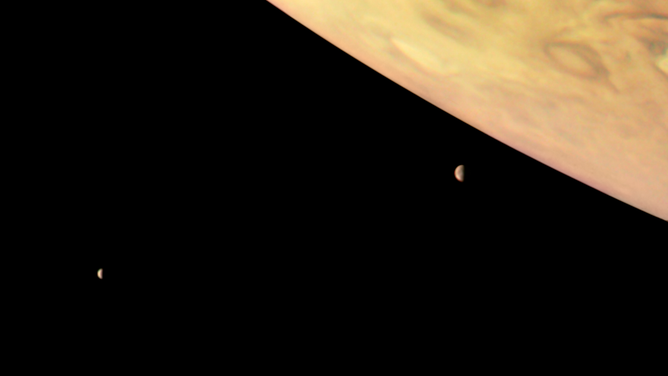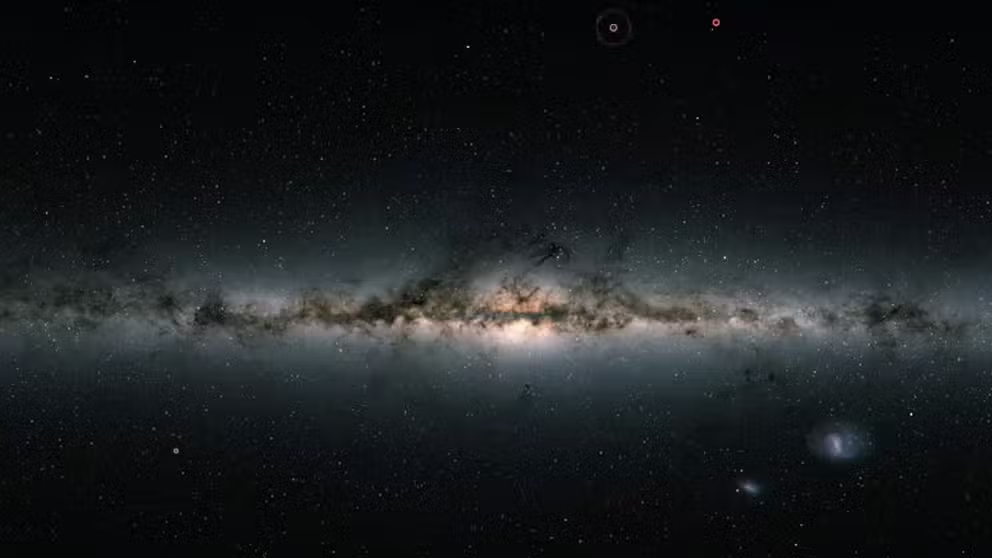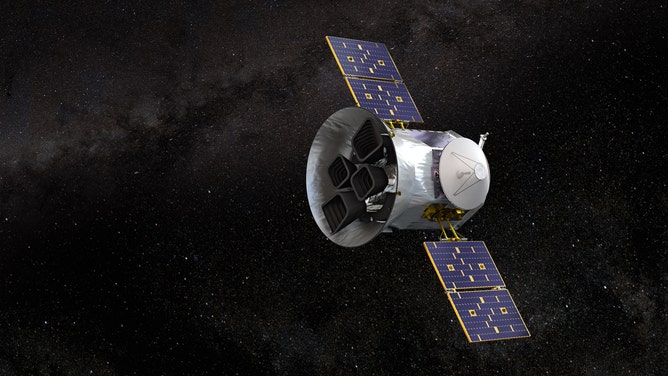Volcanoes may cover a newly discovered Earth-sized exoplanet, NASA says
Known as LP 791-18 d, the exoplanet said to be covered in volcanoes is located about 90 light-years away and estimated to be slightly larger and more massive than Earth.
Listen to the sounds of 5,000 exoplanets
In this animation, exoplanets are represented by musical notes played across decades of discovery. The lower the note, the longer the orbit, NASA says. (NASA/JPL-Caltech/M. Russo, A. Santaguida)
A recent study unveils the discovery of an Earth-sized exoplanet believed to be covered with volcanoes.
Known as LP 791-18 d, the exoplanet is located about 90 light-years away in the constellation Crater and is estimated to be slightly larger than Earth.
LP 791-18 d may also be geologically active with volcanoes, which may be linked to its interactions with other planets in its solar system.

An artist's visualization of LP 791-18 d.
(NASA’s Goddard Space Flight Center / Chris Smith (KRBwyle) / FOX Weather)
One of those planets, known as LP 791-18 c, is about 2.5 times larger and 7 times more massive than Earth. Given that planet d is only slightly larger than Earth, it is dwarfed by planet c.
EXOPLANETS WITH ‘TERMINATOR ZONES’ MAY BE ABLE TO HOST LIFE
According to NASA, planets c and d pass closely to each other during each orbit. When they are close, the larger planet c produces a gravitational tug on planet d, shaping the smaller planet’s orbit to be more elliptical.

LP 791-18 c is a Neptune-like exoplanet that pulls on newly discovered LP 791-18 d.
(NASA / NASA)
On this elliptical path, planet d becomes slightly deformed each time it orbits its star. According to astronomers, these deformations can result in enough friction inside the planet to significantly heat the planet’s interior and produce volcanic eruptions at its surface.
A similar phenomenon occurs in our solar system on Io, one of the moons orbiting Jupiter. The most volcanically active world in the solar system, Io has geological activity caused by a tug-of-war between the powerful gravity of Jupiter and the smaller gravitational pulls from two neighboring moons, NASA said.

Io is sandwiched between Jupiter (right) and the moon Europa (left). Europa is one of the neighboring moons that pull on Io, contributing to Io's volcanic activity.
(NASA / JPL-Caltech / SwRI / MSSS / Roman Tkachenko / NASA)
In addition to having volcanic activity, planet d may also have liquid water and an atmosphere. These two characteristics are linked to the planet’s proximity to its star and how the same side of the planet faces the star or is tidally locked.
Planet d is located on the inner edge of the habitable zone, a region within a solar system where scientists believe liquid water could exist on a planet’s surface. This liquid water, however, may only exist on the night side or side of the planet that faces away from the star, which is much cooler than the day side.
Combined with the geologically active nature of the planet, the low temperatures on planet d’s night side open the possibility for water to condense on the surface – and create an atmosphere.
"A big question in astrobiology, the field that broadly studies the origins of life on Earth and beyond, is if tectonic or volcanic activity is necessary for life," said co-author Jessie Christiansen, a research scientist at NASA’s Exoplanet Science Institute at the California Institute of Technology in Pasadena.
"In addition to potentially providing an atmosphere, these processes could churn up materials that would otherwise sink down and get trapped in the crust, including those we think are important for life, like carbon," she added.
Astronomers made these discoveries using data from NASA’s Transiting Exoplanet Survey Satellite (TESS), the retired Spitzer Space Telescope and ground-based observatories.


